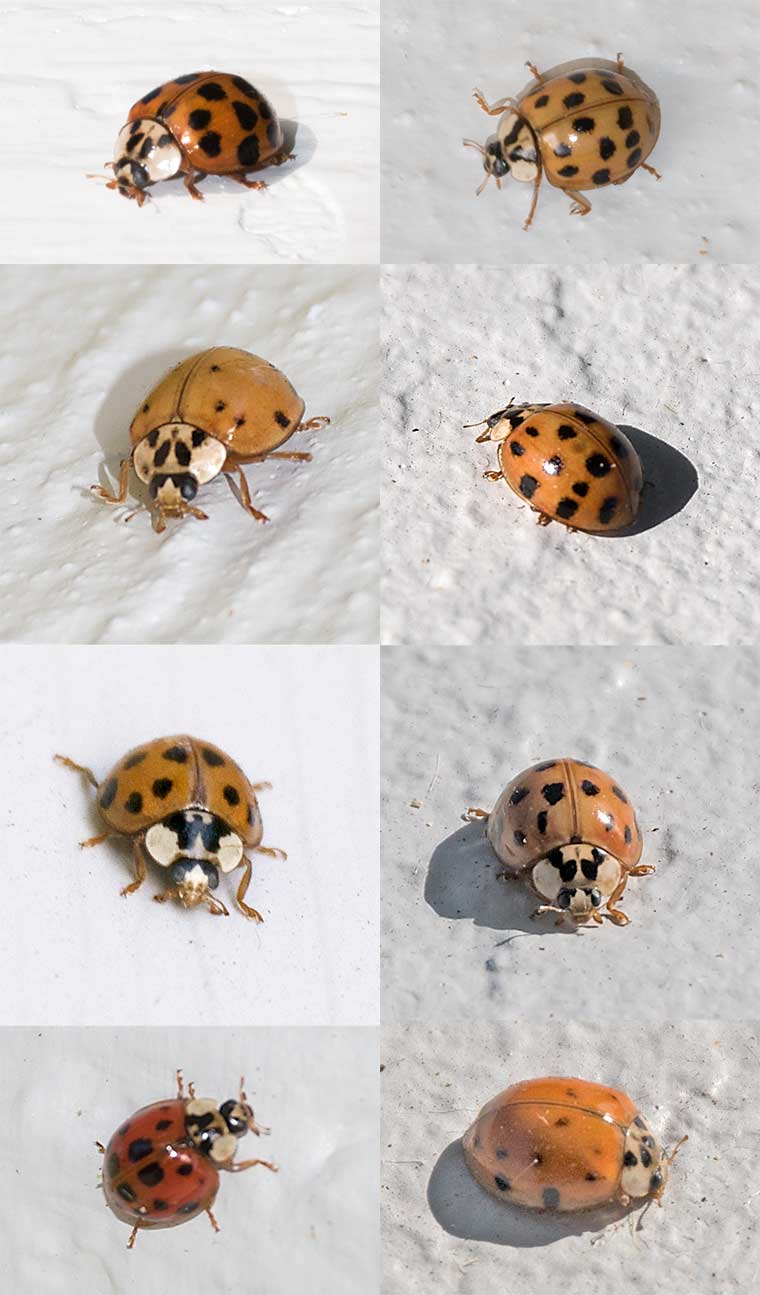During our recent visit to Indiana, the exterior surfaces of many houses were swarming with these little beetles looking for a sheltered place to spend the winter. We always called them “Ladybugs”, but they are also called “Ladybird Beetles”, because they are a type of beetle, not a true bug. Both the larvae and adults of ladybugs are voracious predators of other insects. They are particularly fond of aphids, plant lice and scale insects, and they perform a useful service when these prey items are pests of agricultural plants.
If you don’t pay much attention to them, you might think there is only one type of Ladybird Beetle. However, worldwide there are about 5,000 species in this family, and we have about 500 species in North America north of Mexico. Looking at the pictures above, you might think that several species are represented. But all these are members of one polymorphic species, Harmonia axyridis, the Harlequin Ladybird Beetle. This is an exotic species that was imported to this country from Asia. First attempts to introduce this species were made in 1916, and a major effort was instituted in 1970 to combat insect pests on pecan trees. The first breeding populations in the U.S. were observed in 1988, and now this species is thriving coast to coast.
It does become a nuisance when it tries to enter buildings in the Fall to hibernate. Thousands or tens of thousands of individuals may aggregate on a single building. They do not bite or cause disease, but they do emit a foul-smelling and staining liquid from between the joints of their legs if they are disturbed. Their bright color is a advertisement to predators that they are not good to eat.
The “Lady” in Ladybug is thought to be a reference to the Virgin Mary (aka “Our Lady”). This reference occurs in several European languages, but there are conflicting ideas about how, or why, this name was bestowed.


If they lady bugs are just coming in to hibernate, why do so many of them die? Thanks
Sorry I am a bit late answering your question.( I assume you are talking about seeing so many dead ones in a house or building.) It turns out that our houses are actually not very good places for Ladybugs to hibernate. Ladybugs are very sensitive to temperature and humidity during the time they are hibernating. Our houses tend to be very dry (have low humidity) in winter, so many of the Ladybugs die of desiccation. Also heat in a house may cause them to come out of hibernation too early and they starve to death.
thanks!